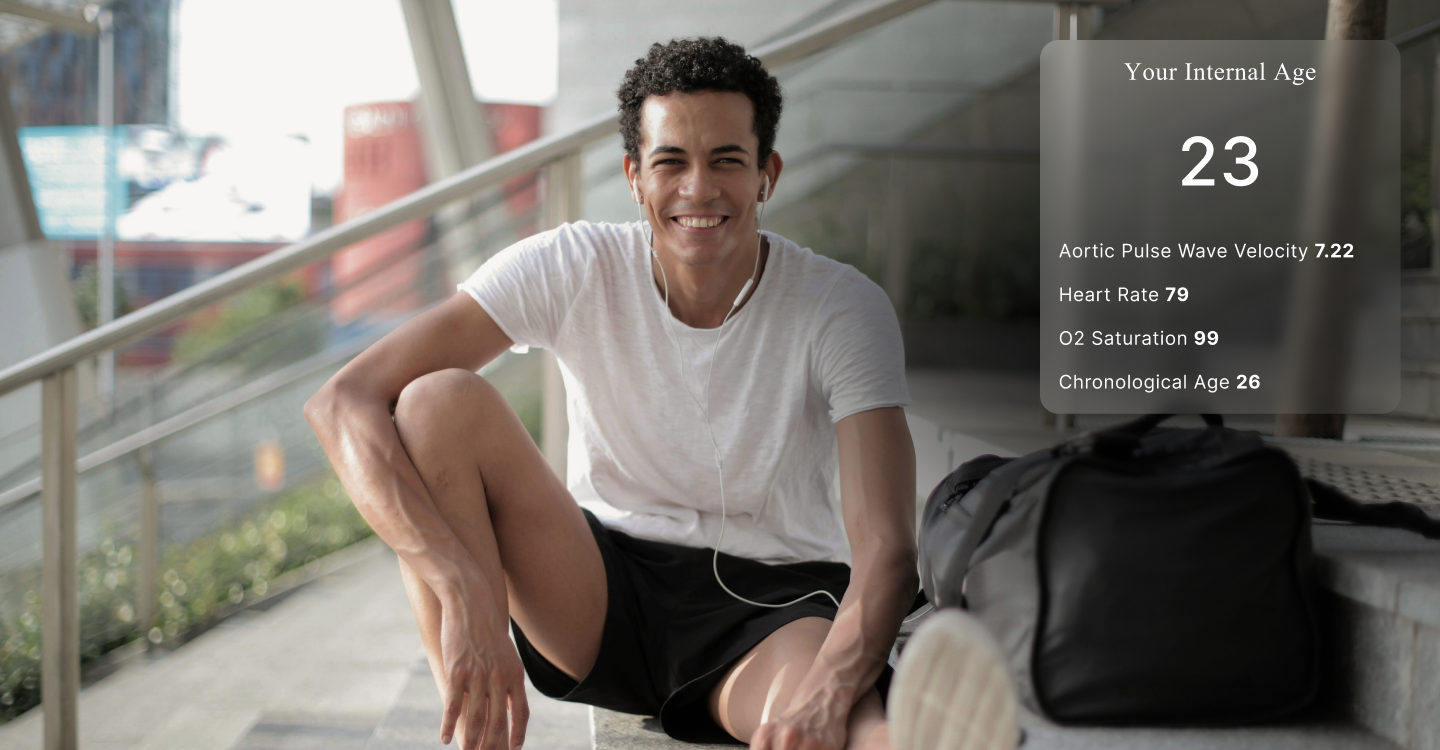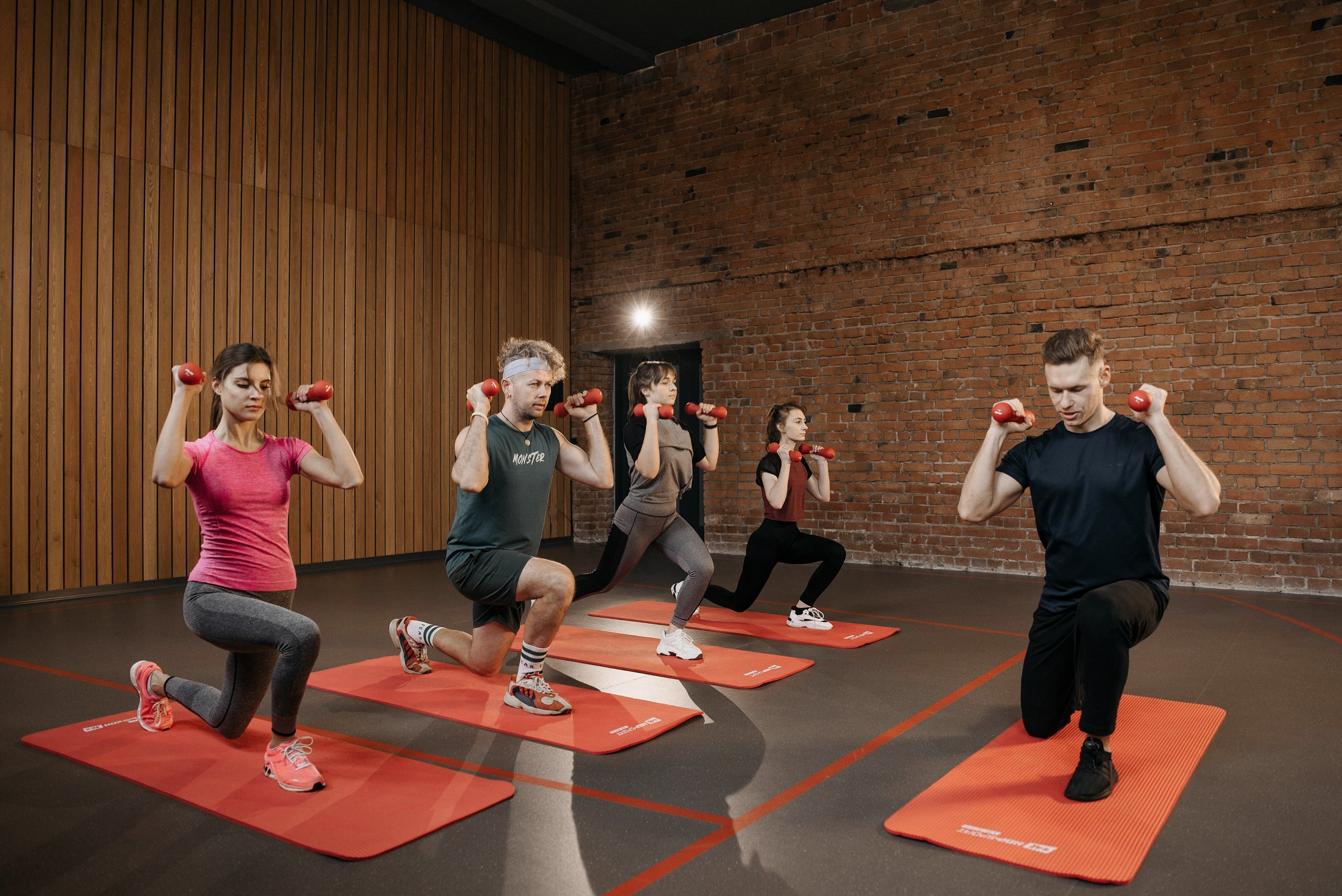
iHeart Internal Age App
Discover the power of inner mobility and take control of your well-being with our revolutionary app. Learn how your lifestyle choices impact your internal age and receive personalized guidance to optimize your health.

Discover Your Internal Age
Welcome to the iHeart Internal Age App - your gateway to understanding and optimizing your inner mobility for a healthier, more vibrant life.
Key Features
Revolutionary ANS tracking
Internal Age gives you a big-picture glance into your overall health by measuring your Aortic Stiffness – a proven indicator of heart health, brain function, and longevity.
Simple testing
The iheart Internal Age app is easy to use and understand. Simply clip on the iheart device, connect to the app, and rest for a few moments while it reads your data.
Flexible time ranges
Find out how old you are on the inside in just a couple minutes.
Track your progress
Visualize trends in your data over time to see whether you’re headed in the right direction.
Personalization
Email a PDF of your results in just a few taps.
Easy sharing
Email a PDF of your results
Reveal Your Internal Age with iHeart

Before
Uncertain Health Status

After
Empowered with Precise Insights
FAQs
What does the iHeart Internal Age app measure?
- iHeart Internal Age uses analysis of the arterial pulse signal to calculate Aortic Pulse Wave Velocity, which is a measure of Aortic Stiffness.
What is Aortic Stiffness, and why is it important?
- Aortic Stiffness is a measure of the flexibility of your aorta, which is the main artery carrying blood from your heart to the rest of your body. The aorta naturally stiffens with age, but lifestyle factors like diet, exercise, and stress management can influence the rate of stiffening. Aortic Stiffness is a well-accepted measure in the scientific community to assess cardiovascular risk (including heart attack, stroke, and dementia), as well as predict the risk of death from all causes.
How is Aortic Stiffness related to Inner Mobility?
- The aorta is in close contact with your spinal column, making Aortic Stiffness a surrogate measure of spinal flexibility and Internal Mobility.
Why does my Internal Age sometimes vary from minute to minute?
iHeart Internal Age is affected by your blood pressure, which changes constantly. Factors like exercise, eating, and stress can cause blood pressure (and Internal Age) to rise and fall. You should focus on the overall trend of your Internal Age rather than minute-to-minute variations.
What can I do to improve my Internal Age score?
- Improving your Internal Mobility can help to improve your Internal Age score. You can start by:
- Improving core mobility: Exercises that promote spinal flexibility and core strength, like yoga, tai chi, and Pilates, can help to improve the mobility of your rib cage, diaphragm, and spine.
- Practicing good breathing techniques: Focus on taking deep, diaphragmatic breaths, which can help to massage your internal organs and improve circulation.
Making lifestyle adjustments: Eating a healthy diet, getting regular exercise, and managing stress can all contribute to better cardiovascular health and a lower Internal Age score.
Real Stories, Real Results
"iHeart quantifies the benefits of my workouts. Now, I know exactly how my habits and behavior are affecting my body and mind"
— Mike, 35
"I used to struggle with anxiety, so I got the iHeart fingertip device to track my stress levels. Initially, I had a stress score of 89 out of 100. After incorporating breathing exercises and yoga in my routines, I can glady say i feel more relaxed and calm than I have felt in years which has reflected in my stress score as well"
— Jane, 38
"I love the holistic approach of iHeart. It reminds me that I'm in control of my health and that understanding the inner state of my body can help me feel really good about my body."
— Sarah, 42



